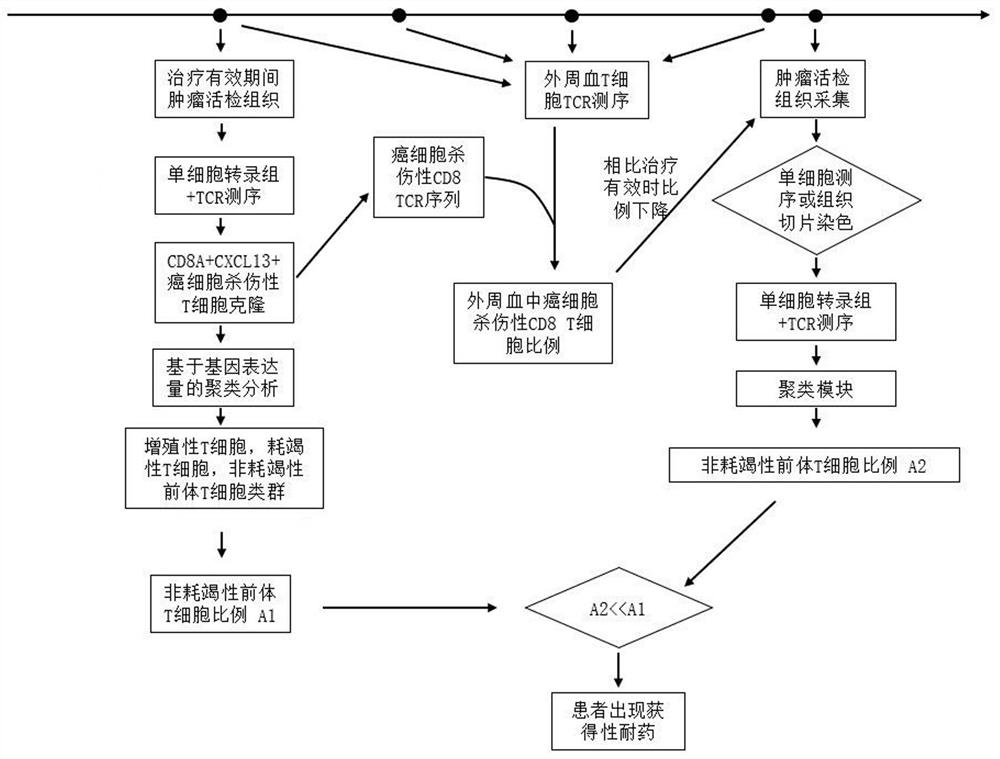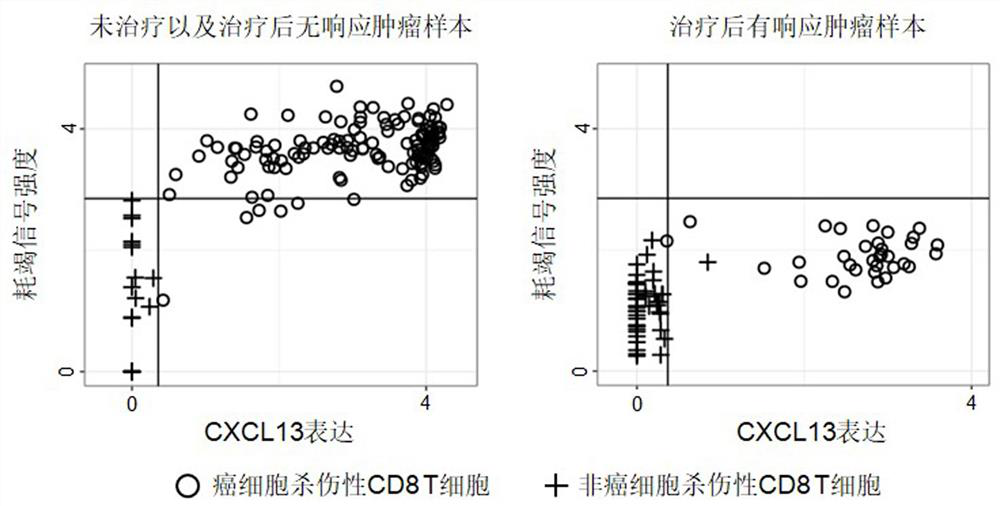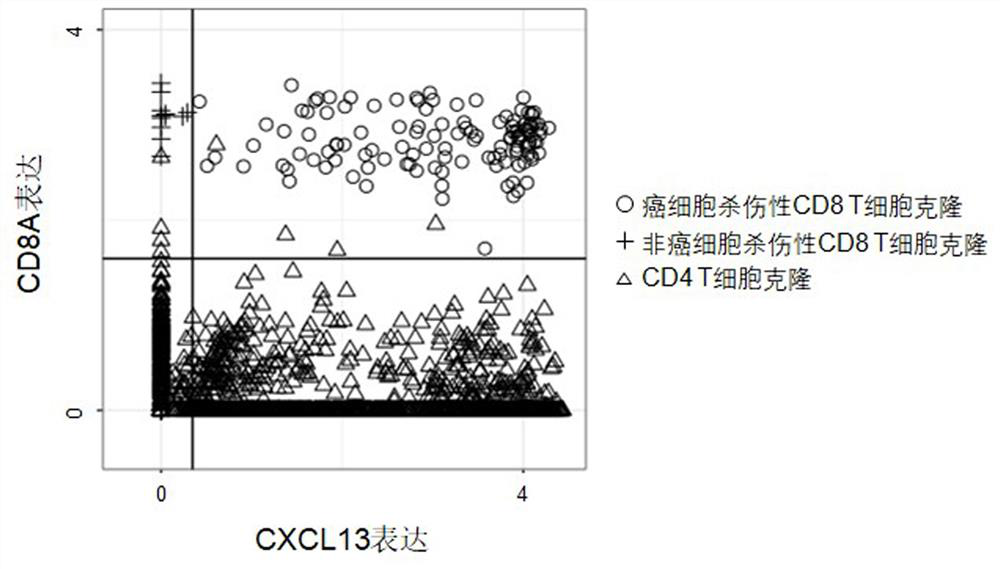An early screening device for immunotherapy acquired drug resistance and its application
An immunotherapy and acquired technology, applied in the direction of microbial determination/testing, sequence analysis, instruments, etc., can solve the problem of early screening methods for immature drug resistance, untimely detection of acquired drug resistance, untimely treatment of patients, etc. problem, achieve good sensitivity, easy adjustment, and avoid damage and pain
- Summary
- Abstract
- Description
- Claims
- Application Information
AI Technical Summary
Problems solved by technology
Method used
Image
Examples
Embodiment 1
[0079] In this example, the data of tumor samples corresponding to 33 cancer patients (head and neck cancer, lung cancer, and breast cancer) who did not receive immunotherapy, did not respond after immunotherapy, and responded after immunotherapy were collected, and the single-cell sequencing data of T cells were analyzed. . Among them, immunotherapy is PD-1 antibody therapy or PD-L1 antibody therapy. The antigen specificity of each CD8 T cell clone analyzed has been verified by in vitro experiments or related computational analysis based on in vitro experiments.
[0080] The result is as figure 2 shown. It can be seen that all CD8 T cell clones are divided into cancer cell killing CD8 T cells that can recognize tumor antigens, and non-cancer cell killing CD8 T cells that recognize specific influenza virus antigens. The results showed that cancer cell-killing CD8 T cell clones from tumors that did not receive immunotherapy and did not respond after treatment highly express...
Embodiment 2
[0082] The expression of CXCL13 and CD8A of all CD4 T cell clones and CD8 T cell clones in the sample in Example 1 was analyzed. The result is as image 3As shown, the expression levels of CD8A and CXCL13 can effectively identify cancer cell-killing CD8 T cell clones. In this embodiment, 0.9 is directly used as the threshold value of CD8A expression level, and 0.15 is used as the threshold value of CXCL13 expression level. If the expression level of CD8A is greater than or equal to 0.9 and the expression level of CXCL13 is greater than or equal to 0.15, it is considered to be a cancer cell killing CD8 T cell clone. Using this method to screen T cell clones, the accuracy rate can reach 96.9%.
Embodiment 3
[0084] To all Exhaustion in embodiment 1 hi CXCL13 + CD8A + T cells and Exhaustion low CXCL13 + CD8A + Unsupervised clustering analysis of T cells found that these cancer-killing CD8 T cells can be divided into 4 subgroups (such as Figure 4 shown), including proliferative T cells (high expression of genes such as MKI67 and STMN1), exhausted T cells (high expression of genes such as HAVCR2, ENTPD1, LAYN, PDCD1, TIGIT, LAG3 and CTLA4) and non-exhausted precursor T cells, Non-exhausted precursor T cells can be further divided into GZMK-positive precursor T cells and IL7R-positive precursor T cells (high expression of IL7R, TCF7, LEF1, CCR7, and SELL genes).
PUM
 Login to View More
Login to View More Abstract
Description
Claims
Application Information
 Login to View More
Login to View More - R&D
- Intellectual Property
- Life Sciences
- Materials
- Tech Scout
- Unparalleled Data Quality
- Higher Quality Content
- 60% Fewer Hallucinations
Browse by: Latest US Patents, China's latest patents, Technical Efficacy Thesaurus, Application Domain, Technology Topic, Popular Technical Reports.
© 2025 PatSnap. All rights reserved.Legal|Privacy policy|Modern Slavery Act Transparency Statement|Sitemap|About US| Contact US: help@patsnap.com



